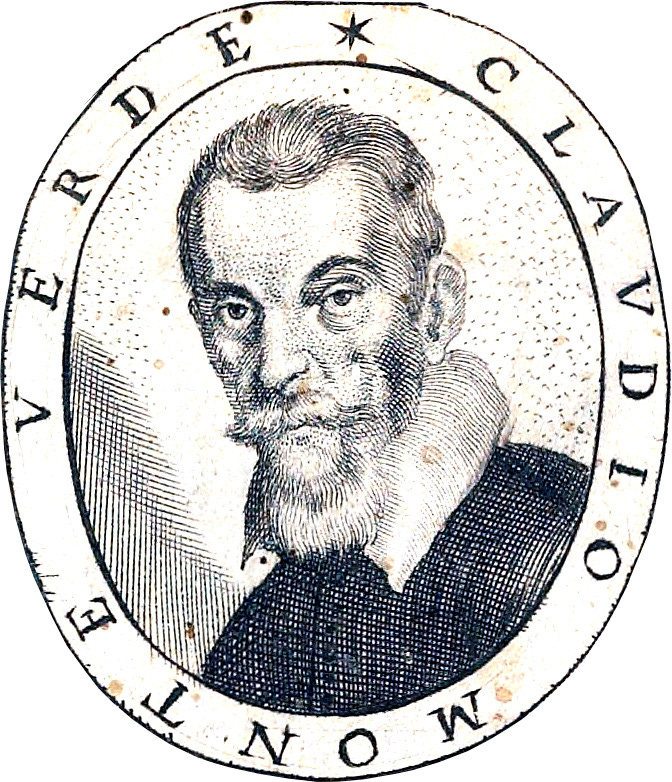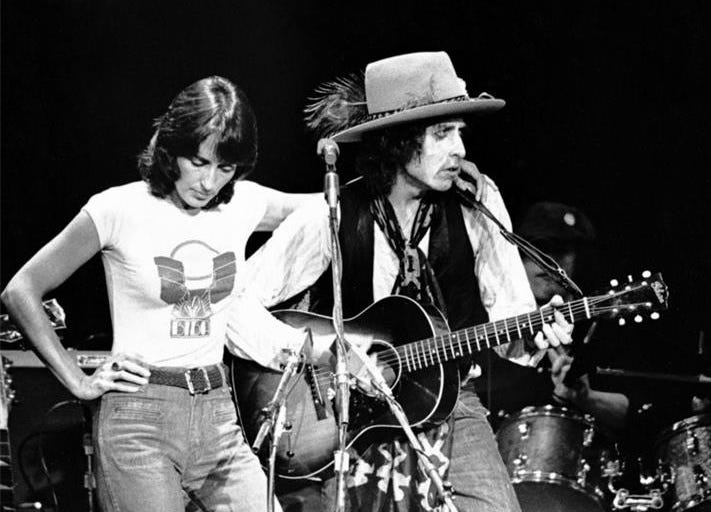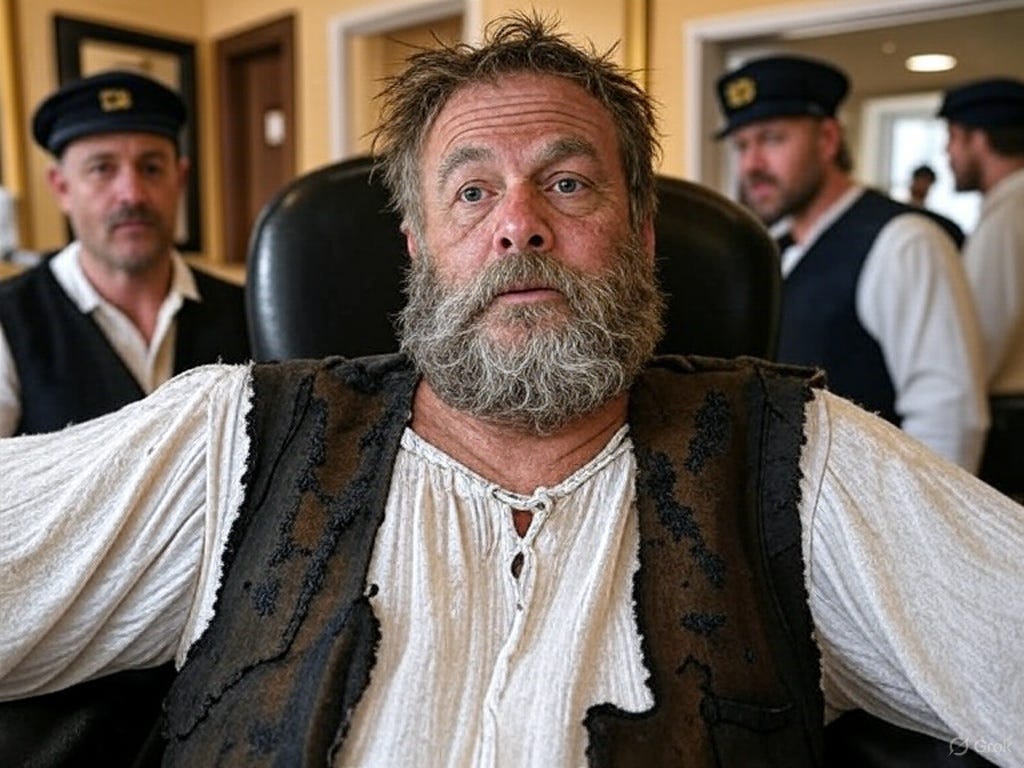‘Beauty may Only Turn to Rust’
An analysis of Dylan’s concept of beauty (yes, he has one!), based on his liner notes to the live album Joan Baez in Concert, vol. 2, with lines back to Plato, Monteverdi, and good ol' Josquin.
This essay was originally written for Andrew Muir’s magazine Judas! way back in 2004 (Check out his substack “More True Performing” if you haven’t already.)
I was so much older back then, and both the writing and the themes have slight tendencies of a pompousness that I try to avoid these days. That said, I still like the text. In it, I try to distil a coherent concept of beauty from Dylan’s long-poem about Joan Baez, a concept that can be related to the two main strands that have been in play in discussions of beauty ever since Antiquity: that of harmonious, proportional rule-based balance, and that of an at times unbridled expression.
The text is actually a first attempt to approach that je ne sais quoi about Dylan which I’ve later called “prose music”.
“Dylan can’t sing.”
90% of the Western population
“That boy’s got a voice.
Maybe he won’t make it with his writing,
but he can sing it. He can really sing it.”
Woody Guthrie
(quoted from Joe Klein’s biography)
It’s a pleasure to be able to begin an article about Bob Dylan with one of the most widespread clichés about him: that he can’t sing. No matter what standard response one has whenever the topic arises (the passive-aggressive: ‘If so, then Picasso can’t paint either’, the cautiously defensive: ‘Since so many people like him, there must be something there to like’, the dismissive: ‘To each his own; if you don’t like him, it’s your problem’, etc.) there is something about the question that goes beyond the urge to defend.
That is what this article is about: where the question stems from and in what it consists. The answer will bring us back to classical Antiquity, through medieval and Renaissance aesthetics, and up to a modern interpretation of Dylan’s song-making, against this background.
Aestheticized Sound
What does it mean, ‘Dylan can’t sing’?
What does it mean to sing? Not just to utter sounds. Singing belongs to the sphere of music, and although we all ‘know’ what music is, it is still useful to remind ourselves of what we mean by it.
A fairly wide definition, which covers everything from Gregorian Chant to John Cage, goes: Music is organized sound, or slightly more precise: Music is sound organized according to some generally accepted system of criteria for production and reception of such sounds, or shorter: Music is aestheticized sound.
There are books to be written about this; at the moment it may suffice to say that to most people aesthetics have something to do with beauty, and to most people who disapprove of Dylan’s vocal capacities, this is the reason: he can’t (or: doesn’t want to) sing beautifully, and no matter how many other criteria for singing he fulfils – a certain vocal dexterity, a sense of rhythm and harmony, etc. – none of this helps: Dylan simply can’t sing.
Thus, it would seem that for a broader appreciation of Dylan, a more thoroughgoing study of beauty would be useful – his concept of beauty, and ours, we who judge him. This is at the heart of the question of what it means to be able to sing, and when the verdict may differ it is because there is no one concept of beauty.
The Beautiful World of Bob Dylan
Dylan touches upon beauty in a number of songs, but in two songs only is it a genuinely good thing.
One is the exuberant, I’m-such-a-happy-family-man-who-loves-my-beautiful-wife anthem “Never Say Goodbye’’ (“You’re beautiful beyond words, You’re beautiful to me”), where it becomes such a huge word that it almost tears the song apart.
The other is the endearing “Tomorrow is a Long Time”, where the beauty of it actually works, perhaps because the use of the term is kept simple, and not something beyond comprehension (which must be what “beautiful beyond words” implies):
There’s beauty in the silver, singin’ river
There’s beauty in the sunrise in the sky
But none of these and nothing else can touch the beauty
That I remember in my true love’s eyes.
But in the majority of cases it is the negative aspects of beauty that are emphasised. Either its deceptiveness – most explicitly expressed in “Long Time Gone”:
So you can have your beauty,
It’s skin deep and it only lies.
And in “Trust Yourself”:
Don’t trust me to show you beauty
When beauty may only turn to rust.
If you need somebody you can trust,
Trust yourself
There is its fickleness: the saddening inevitability of its decay in “Cold Irons Bound”:
It’s such a sad thing to see beauty decay;
There is also the despair of seeing it fade away, out of reach, in “Where Are You Tonight?”:
As her beauty fades and I watch her undrape
Oh, if I could just find you tonight!
Or the ridiculed vanity of it, as the beauty parlour on “Desolation Row” fills up with presumably unshaven, unwashed, filthy, smelly, abusive, and ugly sailors. (At least that’s how I’ve always heard the line; they could of course be well-groomed marines, fixing themselves up to go to the circus.)
From more recent times, there is the world-weary realisation that “behind every beautiful thing there’s been some kind of pain” (“Not Dark Yet”).
I’m not quite sure what to make of “Sweetheart Like You” – “You can be known as the most beautiful woman who ever crawled across cut glass to make a deal” – but the mental images that line creates, makes it hard to see it as something positive.
Then there is a group of songs which treat the subject in a more ambiguous, ambivalent way. In “Dark Eyes”, beauty becomes an expression for the real, which is left unrecognised in a (sadly human) world hanging between discretion and lust for revenge, where life is a game and nothing is taken seriously:
I feel nothing for their game
where beauty goes unrecognized.
We find the same utopian view on beauty in “Shelter from the Storm”:
Beauty walks a razor’s edge,
someday I’ll make it mine.
This is clearly a different kind of beauty than in the other group of songs: a more intimate concept, not directed at (or emanating from) things, but a way of taking in the world, be it good or bad, pretty or foul; closer to “Song to Woody” –
I’m seeing your world of places and things
of paupers and peasants and princes and kings
– than to “Sugar Baby” –
I can see what everybody in the world is up against.
Finally, there is the beauty of divine justice in “I and I” (‘Took a stranger to teach me to look into justice’s beautiful face’), which is not at all concerned with the appearances of the world, but with moral ideals in the widest sense – far removed, perhaps, from the other examples, but nevertheless important, because it brings in the theme of divine beauty, to which we shall return.
In an interview from 1981, the question of beauty came up during a discussion of the value of art:
Herman: Well, if it expresses truth and beauty then it’s leading you to God?
Dylan: Yeah? (laughs)
Herman: Well, wouldn’t you say?
Dylan: If it’s expressing truth I’d say it’s leading you to God and beauty also.
Herman: I’ve always thought that those were the only two absolutes that there were.
Dylan: Well, beauty can be very, very deceiving. It’s not always of God.
Herman: The beauty of a sunset?
Dylan: Now, that’s a very special kind of beauty.
Herman: Well, how about the beauty of the natural world?
Dylan: Like the flowers?
Herman: Yes, and the beasts … and the rain …
Dylan: All that is beautiful, That’s God-given. I’ve spent a lot of time dealing with the man-made beauty, so that sometimes the beauty of God’s world has evaded me.
Here, all the different categories that I’ve pointed to in the songs are gathered: the vain beauty, the god-given, natural beauty, and beauty as a general concept, almost equated with God.
Before I go on with the exegesis of relating Dylan’s concept of beauty, as expressed in this handful of songs, with ‘our’ concept – that is: with the various concepts that we find in the traditions of thinking around these things, and that are still relevant, directly or indirectly, for how each one of us forms our perception of the world around us (for no less a perspective than this is at stake here) – I must bring up the most important text of them all from Dylan’s hand concerning beauty: the liner notes to Joan Baez in Concert, Part 2.
Beauty and the Beast
On the surface level the liner notes could be read as the Beast’s story about his journey to appreciating the Beauty – more concretely about how Dylan overcame his resistance towards this voice of hers, which to him represented an untrue beauty – untrue because it was unreal. The text is probably the closest we will ever get to an account of Dylan’s feelings about her around that time. But it is not only a story about Joan Baez – it is in fact a manifesto about beauty, reality, ugliness, buffoonery, kingship.
It begins:
In my youngest years I used t’ kneel
By my aunt’s house on a railroad field
An’ yank the grass outa the ground
An’ rip savagely at its roots
An’ pass the hours countin’ strands
An’ stains a green grew on my hands
As I waited till I heard the sound
A the iron ore cars rollin’ down
The tracks’d hum an’ I’d bite my lip
An’ hold my grip as the whistle whined
Crouchin’ low as the engine growled
I’d shyly wave t’ the throttle man
An’ count the cars as they rolled past
But when the echo faded in the day
An’ I understood the train was gone
It’s then that my eyes’d turn
Back t’ my hands with stains a green
That lined my palms like blood that tells
I’d taken an’ not given in return
But glancin’ back t’ the empty patch
Where the ground was turned upside down
An’ the roots lay dead beside the tree
I’d say ‘how can this bother me’
…
An’ I asked myself t’ be my friend
An’ I walked my road like a frightened fox
An’ I sung my song like a demon child
With a kick an’ a curse
From inside my mother’s womb –
To be slightly pompous about it, one might say that these lines introduce the theme of the individual placed between physical reality (represented by the grass on the railroad field) and surrounding humanity (the train and the throttle man). They both leave him, one way or another, and the only option is isolation. The realisation of a something beyond the “I” sparks a desire to reach this other, and to leave the vegetative level behind.
The end of the quotation above is the first of a series of “An’ I walked my road …” phrases which are the backbone of the poem and which map the development of the “I”-character.
The Savage
The first stage is that of the ‘frightened fox’: the savage, the beast, the complete egoistic innocence, innocent because it is lawless, but only to a point – is a kicking child innocent of the pain it inflicts at birth? Is a frightened fox innocent of its bite wounds just because it doesn’t mean any harm?
The Symbols
This is followed by a rejection of words and symbols:
‘An’ I locked myself an’ lost the key
An let the symbols take their shape
An’ form a foe for me t’ fight
…
An’ my first symbol was the word “beautiful”.
Why precisely beauty had to be the first target is explained in the following lines:
For the railroad lines were not beautiful
They were smoky black an’ gutter-colored
An’ filled with stink an’ soot an’ dust
An’ I’d judge beauty with these rules
An’ accept it only ‘f it was ugly
An’ ’f I could touch it with my hand
For it’s only then I’d understand
An’ say ‘yeah this’s real’
The ugly and the tangible, as all that is of value – unlike beauty.
It is not the ugliness itself that matters, though. Rather, ugliness is a representative of reality, or, more precisely: that part of reality which has not (had not, in the early ’60s) traditionally been allowed into the beautiful world of high-flying ideas about the world. In other words: art. The lines are a rebellion against that branch of the late-Romanticist concept of art which overflows with elves and the superhuman, hyper-real part of reality, be it expressed as beauty, power, or any other fascist ideal.
This is not the only way to react, but the Dylan in the poem doesn’t know that yet. For him, the reaction was to conflate the real with the ugly, the only opposite he knew to beauty, this first symbol he had to face in his crusade against (and quest towards) the outside world.
The Clown
The next few ‘An’ I walked my road’ lines are a merciless series of steps into the deep isolation that the fundamental questioning of concepts must lead to. First he is ‘Like a saddened clown | In the circus a my own world’, the clown being the ridiculous character who doesn’t know the appropriate way to react and act in a given situation, who like a child hasn’t yet learned the ways of life (or, as Graham Greene so exquisitely put it: the clown is the one who doesn’t learn from his mistakes).
The Prisoner
Then he is
Like an arch criminal who’d done no wrong
[…]
screamin’ through the bars
a someone else’s prison.
‘Isolation’ is still the key word: the confinement of having to live in a world where the concepts through which the world becomes meaningful are not your own. This may be the most concise image ever carved of the terrors of adolescence on the verge (but not yet there) of growing up.
The King and Death
At the climax of this series, he is ‘Like a lonesome king … Starin’ into | A shallow grave’. He is now the supreme ruler of his own world, but it’s a lonely world, and when he tries to look beyond it, the step forward also seems to lead six feet down: to give up his isolated kingdom is also the ultimate liminality of death.
The Madman and the Sublime
The last step in the journey of the sensitive mind towards the world is the ‘scared poet | Walkin’ on the shore … Afraid a the sea’. The poet is a madman, but a madman who communicates, who transcends the limits of his own world, despite the fear, either of the open grave in front, or of the infinity of the ocean of people and words and voices out there. The image of the poet on the shore, frightened of the sea, wonderfully captures the notion of the sublime: the awe before the frightening immensity of the infinite, which during the age of Romanticism became the most important correlative to beauty.
The sublime is terrifying, but necessary for the poet (and, by extension, the human being), because in a wider sense it represents the awakening to the world outside. And, significantly, unlike the previous ‘walked my road’ lines, this is not just a metaphor: the person in the poem is physically placed somewhere in the real world (perhaps on the same beach to which the Tambourine Man led him and where he danced with one hand waving free a few years later?).
The Irresistible Beauty of a Voice
This not only brings us full circle back from symbols to reality again, but also to the topic of the text: Joan Baez and her voice. The next section of the poem brings the peripeteia, the transformation of the protagonist after the initial crisis.
During a car drive he hears Baez tell the story of how, during a childhood spent partly in Iraq, where her father was working for a year in the early 1950s, she watched dogs being beaten to death in the street, to the general amusement of the onlookers, and how she tried to save one of these dogs, but failed.
For Dylan, in the poem, this story leads to the realisation that that voice, which to him so far has only represented vanity, may have been founded in the ugly reality after all – even more so since, at the same time as he was killing grass in Minnesota, she was actually trying to save life.
An’ that guilty feelin’ sprang again
Not over the roots I’d pulled
But over she who saw the dogs get killed
An’ I said it softly underneath my breath
‘Yuh oughta listen t’ her voice
Maybe somethin’s in the sound’
…
An’ at the time I had no song t’ sing.
‘I had no song to sing.’ It’s a shocking statement, not just because it comes from the Voice of a Generation himself, but because of its general implications.
At some point, silence replaces the struggle, for better or for worse. The song, the voice that he so painstakingly has conquered for himself is no more real than hers.
And when the voice, which at first had appeared as vain beauty, proves to hide within itself reminiscences of the most brutal reality, the whole system of oppositions that he has constructed for himself must fall.
His tired nerves succumb to her singing, in what is perhaps not a wholehearted acceptance of its beauty, but at least a surrender to its force. The immediate consequence is liberation, both from the rationality of concept formation, and from these very concepts.
This is again madness, of course, ‘An’ I laughed almost an insane laugh’. The laughter is directed both at himself and at the foolishness of his previous creed, that ‘beauty was | Only ugliness an’ muck’.
And after finding his new truth in ‘the breeze I heard in a young girl’s breath’ which ‘proved true as sex an’ womanhood’, he finds himself, at the end of the poem, going back to the railroad track in his mind. Again he is suspended between raw reality and society, but this time it contains no threat, no danger, but also no desire:
An’ I’ll walk my road somewhere between
The unseen green an’ the jet-black train
An’ I’ll sing my song like a rebel wild
For it’s that I am an’ can’t deny
But at least I’ll know not t’ hurt
Not t’ push
Not t’ ache
An’ God knows … not t’ try –
This is not really resignation, but a realisation that neither beauty nor ugliness nor any other symbols need to be opposed; they are not more dangerous to the ‘frightened fox’ than the poet is to the ocean (or vice versa?).
The consequence that runs parallel to this freedom is a reshaping of the concept of beauty which has been so central to the development up to this point in the poem. The journey to Dylan’s appreciation of the beauty in Joan Baez’s voice is also about personal maturation and growth. What started out as the assimilation of reality and the ugly, and the opposition of this to beauty, has given way to the insight that there can be several concepts of beauty, and that at least in some of them there is a place for reality.
This can be taken yet another step: ultimately, it may not be reality itself that matters, but the ability to perceive this reality and to express that perception to someone else.
Thus, the initial opposition can be rephrased as that between beauty and expression, and the insight gained is that this does not necessarily have to be an opposition: even the beautiful can contain the expressive.
And with that, we are ready to step back into the history of aesthetics.
Proportion and Expression
The two stances in Joan Baez in Concert, Part 2 can easily be followed through the entire history of art.
One is the idea that beauty lies in an orderly and proportionate relationship between parts of a whole and between the parts and the whole.
This idea forms the backbone of any concept of beauty up until the eighteenth century. Pythagoras discovered that the sounds that we find pleasing are based on simple proportions, while ugly sounds have more complex proportions. Plato considered this kind of mathematical harmony to be the fundamental property of the world. In his creation myth Timaios, the creator-god shapes the world beginning with unity (1), then extending it with ‘the other’ (2) and ‘the intermediary’ (3), and along the corresponding number series 1, 2, 4, 8 and 1, 3, 9, 27.

This specifically Greek idea found its way into the Bible through the Wisdom of Solomon 11: 21: ‘thou hast ordered all things in measure and number and weight’.
This is not to say that beauty was perceived as a purely intellectual, rational matter of weights and measures. Behind the seemingly dry façade of beauty as numbers lies the notion that numbers and numerical relations are reflections of the divine principles governing the universe; that we find the same relations in the universe as a whole, in human beings (e.g. in the balance between the four humors blood, phlegm, yellow and black bile), in musical sounds, and in visible beauty – so not at all dry and theoretical, but directly relevant for how we perceive the world.
The belief that the harmonious is a reflection of the divine may (together with the neatness of the system) explain why such a concept could rule supreme for two millennia.
But it was never entirely unchallenged, and all the other perspectives on beauty that we have encountered above are recognisable in the history of aesthetics: the sublime, the beauty of the law, natural beauty, and the ethics of beauty. These could all be seen as extensions of the basic concept of beauty, as concessions to the assaults from reality (or truth) on the neatness of mental constructions.
The Mad Poet
But the most persistent opponent has been the character who shows up at the turning point of Joan Baez in Concert, part 2: the madly laughing poet.
Plato writes in the Phaedrus that one of the frenzies to which people are subject comes from the Muses. When these pour inspiration upon a man, it
inspires [the soul] to songs and other poetry. But he who without the divine madness comes to the doors of the Muses, confident that he will be a good poet by art, meets with no success, and the poetry of the sane man vanishes into nothingness before that of the inspired madmen.
The relationship between art and beauty is a long and complex one, but we may condense it here into the opposition, in Plato’s account, between on the one hand the craft which rests on knowledge of the divine principles, expressed as rules, and on the other the expression – of an experience of reality, for the benefit of the rest of us – which defies such rules.

This conflict between rule-based beauty and inspired expression pops up now and again through history. Josquin des Prez (d. 1521), whose music to modern ears is the epitome of soothing, Renaissance beauty, was chided by his greatest fan, Glareanus, for occasionally not having ‘repressed the violent impulses of his unbridled temperament’. (The sound clip is my own five-part rendition of the chanson “Plaine de dueil” – full of pain – perhaps one of the songs Glareanus might have had in mind):
Full of pain
and sadness,
seeing that my suffering
increases all the time,
and that in the end
I can’t bear it anymore,
I’m constrained,
in order to comfort myself,
to render the rest of my life to you.
I beg you and humbly ask,
for the pains that fill me,
never to leave me,
since I’m yours for the rest of my life.
Monteverdi’s Errors
The most famous occasion of such a conflict is probably the debate between the composer Monteverdi (d. 1643) and Artusi in the early seventeenth century. Artusi took it upon himself to represent the true art of music, and he had found a number of ‘errors’ in Monteverdi’s works.

Monteverdi’s reply was that, yes, he had broken the rules and produced “errors” in his music, but he had done so for the benefit of expression. The words demanded it! In his music, the words were no longer to be the servant of harmony, but its mistress.
Monteverdi’s new style was in one sense a radical breach with the prevalence of beauty-as-harmony, but the theoretical legitimization that he gives of his new approach plays on the same field as the old. He can place words above harmony because ‘the words conform to the disposition of the soul; and the rhythm and the harmony follow the words’. It becomes another path to the divine principles: what appears as raw, ugly expression, nevertheless has something of beauty in it, because it, too, goes back to ‘the disposition of the soul’.
Sounds familiar? With some modification, this could have been incorporated into the discussion of Joan Baez in Concert, Part 2 – the apparent conflict between rational beauty and expressivity, and the tearing down of the boundaries between them.
Expression and style
There is one point that appears more clearly in the Monteverdi controversy than in Dylan’s poem, and yet it is so central to Dylan’s whole work that it can easily be added to the discussion: the influence of the word.
Have a look at the Guthrie quotation at the top again:
He can really sing it.
It.
Not just ‘sing’, but ‘sing it’.
That little extra word turns the dying hobo-poet’s short statement about his young protege into the most precise description of Dylan’s art. Because to sing is not only about music, but, as Plato knew, and Josquin, and Monteverdi, and Dylan, it’s about words too, and specifically the combination of the two. It’s about what you sing, what you project, what you express, as well as how you do it.
It is a commonplace among musicians to claim to be influenced by Dylan, but apart from a general desire to write meaningful lyrics (and sometimes to toot the harmonica in a less than virtuosic way), it is often difficult to see more precisely how this influence really comes through. And by taking only the style of writing as their influence, they miss half of the equation – perhaps the most important half, for a singer, anyway.
What makes Dylan so special, I believe, is not only his ability to shape words according to the ‘disposition of the soul’, but also to let this disposition come to expression, through the words, in a style which is shaped precisely to fit this expression. As with Monteverdi, this style will go beyond the requirements of the beautiful and of criteria of melodiousness, because Dylan’s art is founded in a perfect symbiosis between lyrics and singing style.
The perception of the world that is expressed through the words is obviously highly personal and individual. But just as personal and individual is the style in which those words are communicated. And with Dylan more than with most singers, the symbiosis between lyrics and style includes the singer himself, in an identification between singer and song, so that when Dylan sings, we not only hear the song, we hear Dylan.
This is most immediately evident in songs like ‘Sara’, where the singer is almost physically present in the song, but fundamentally it is just as true about ‘Blowin’ in the Wind’ (and, as an example, the perspective is just as irrelevant regarding a song like the Beatles’ ‘I Wanna Hold Your Hand’). [This point was made in direct response to a point Toby Richards-Carpenter had made in the previous issue of Judas!, where he compared Dylan with Paul McCartney: ‘Bob Dylan owns his songs. The songs are his tools and he will use them as he likes. Paul McCartney, on the other hand, is the tool that ‘Hey Jude’ uses in order to get heard.’]
What we hear is one individual’s perspective on the world, and since it presumably is the same world we ourselves relate to, as we tear up grass somewhere else along the same train line, this perspective is potentially of vital importance – far more so than some divine principle, long forgotten and well hidden in the kind of beauty that will, inevitably, only turn to rust.
(2004)






![Joan Baez – In Concert Part 2 – Vinyl (LP, Album, Stereo), 1963 [r4508544] | Discogs Joan Baez – In Concert Part 2 – Vinyl (LP, Album, Stereo), 1963 [r4508544] | Discogs](https://substackcdn.com/image/fetch/$s_!s-JC!,w_1456,c_limit,f_auto,q_auto:good,fl_progressive:steep/https%3A%2F%2Fsubstack-post-media.s3.amazonaws.com%2Fpublic%2Fimages%2Fec6aea74-c1b0-40f8-9414-004a85aa92c1_600x593.jpeg)
